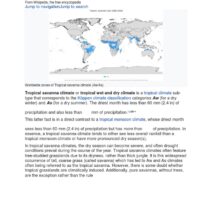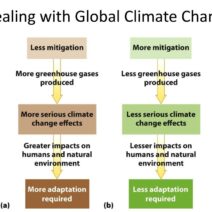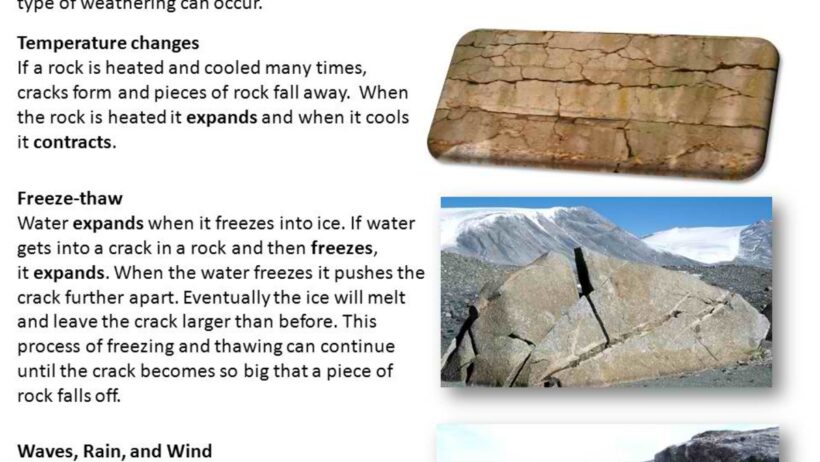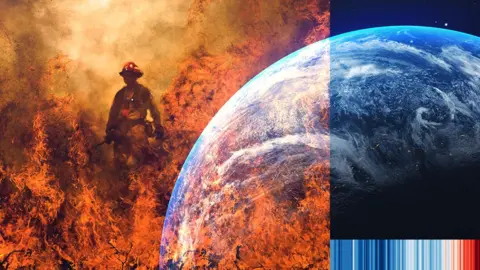Weathering, a critical geological process, epitomizes the interplay between atmospheric conditions and the breakdown of rocks. This phenomenon is an observable aspect of our natural environment, yet it holds deeper implications that prompt fascination and scholarly inquiry. The myriad forces at work reveal intricate dynamics that underscore the relationship between climate and the lithosphere. Understanding these mechanisms not only enhances awareness of landscape formation but also provides insights into the sustainability of ecosystems.
The two primary categories of weathering are mechanical and chemical. Mechanical weathering refers to the physical breakdown of rocks without altering their chemical structure. Factors such as freeze-thaw cycles, abrasion, and thermal expansion are instrumental in this process. For instance, during colder months, water seeps into fractures within rocks. When temperatures drop, this water freezes and expands, causing the rocks to crack gradually—a process often colloquially termed frost wedging.
Conversely, chemical weathering entails transformations in the minerals that constitute the rock. This process is heavily influenced by the presence of water, temperature, and atmospheric gases. Rainwater, often slightly acidic due to dissolved carbon dioxide, can react with minerals. A classic example is the dissolution of calcite in limestone, which occurs as the acidic solution penetrates the rock, leading to karst topography characterized by sinkholes and caves.
Temperature is a paramount climate factor in both weathering forms. In arid regions, the pronounced diurnal temperature variations can result in rapid mechanical weathering. Rocks subjected to intense sunlight during the day may expand, subsequently contracting at night as temperatures fall. This cyclical thermal stress induces cracks, accelerating the weathering process. On the other hand, regions with high humidity might experience a more pronounced chemical weathering profile. The excess moisture facilitates the movement of water through soils and rocks, enhancing the chemical reactions that break down minerals.
The role of precipitation in weathering cannot be understated. Areas with high rainfall tend to exhibit significant chemical weathering due to the enhanced interaction between rainwater and rocks. Tropical rainforests, for instance, are prime examples where abundant precipitation facilitates the leaching of minerals, leading to nutrient-poor soils. This phenomenon not only affects plant growth but also reflects broader ecological consequences. The intricacies of these interactions illustrate the delicate balance of ecosystems influenced by weathering patterns.
Wind erosion stands as an additional mechanism influenced by climatic conditions. In regions characterized by strong winds, such as deserts, rocks and soil particles are dislodged and transported over vast distances. This mechanical weathering contributes to the sculpting of iconic landforms such as sand dunes and eroded mesas. Wind-driven weathering offers another dimension to the understanding of landscape dynamics, emphasizing that the forces of nature work in concert to engineer the Earth’s surface.
The human imprint on climate is increasingly significant, prompting critical examinations of how anthropogenic activities alter weathering processes. Urbanization, industrialization, and deforestation are contributing to changes in local climates, which in turn influence local weathering rates. For instance, the increased emissions of carbon dioxide from burning fossil fuels heighten the acidity of rainwater, leading to accelerated chemical weathering in urban areas. The implications extend beyond mere geological changes; they concern the integrity of infrastructure and the sustainability of agricultural practices.
Climate change, an overarching issue of our times, has profound ramifications for weathering processes. As global temperatures rise, researchers predict alterations in precipitation patterns, with potential shifts toward either increased rainfall in certain regions or more prolonged droughts in others. Such variations can markedly affect the rates of weathering. For example, prolonged droughts may inhibit chemical weathering, while increased precipitation may enhance it, leading to accelerated erosion of soils and landscapes.
The phenomenon of weathering is not merely a geological curiosity; it forms a foundational aspect of soil formation and land evolution. As rocks weather, they contribute essential nutrients to the soil, thereby playing a crucial role in sustaining plant life. In this regard, the cycle of weathering becomes integral to the broader ecological context, demonstrating how geological and biological processes are intertwined.
Moreover, weathering and erosion serve as indicators of environmental change. By studying sedimentary deposits and the rates of weathering in various ecosystems, scientists can glean insights into past climate conditions. Such investigations provide a historical context for current changes while contributing to our understanding of future climatic trajectories. This interplay between geology and climatology opens avenues for conservation practices, enabling targeted strategies that promote resilience against detrimental weathering influences.
In conclusion, the intricate processes of weathering serve as a testament to the dynamic relationship between climate and rock breakdown. Through mechanical and chemical methods, rocks are transformed and integrated into the broader ecological framework. Observing these patterns allows humanity to better comprehend our environment and respond judiciously to the challenges posed by climate change. As stewards of the Earth, it is essential to appreciate the complexities of weathering, ensuring sustainable practices that honor this crucial process in the ongoing narrative of our planet’s evolution.




